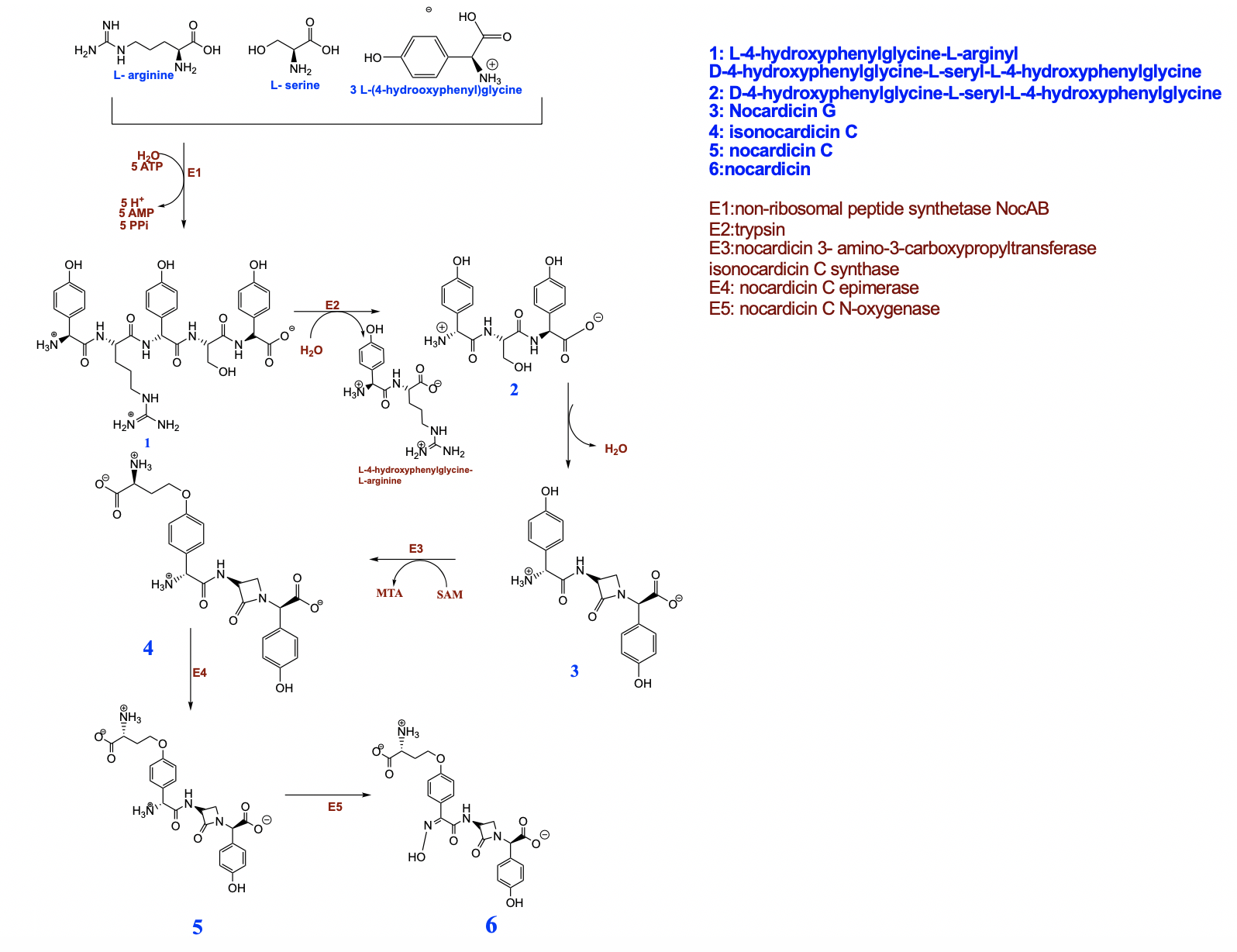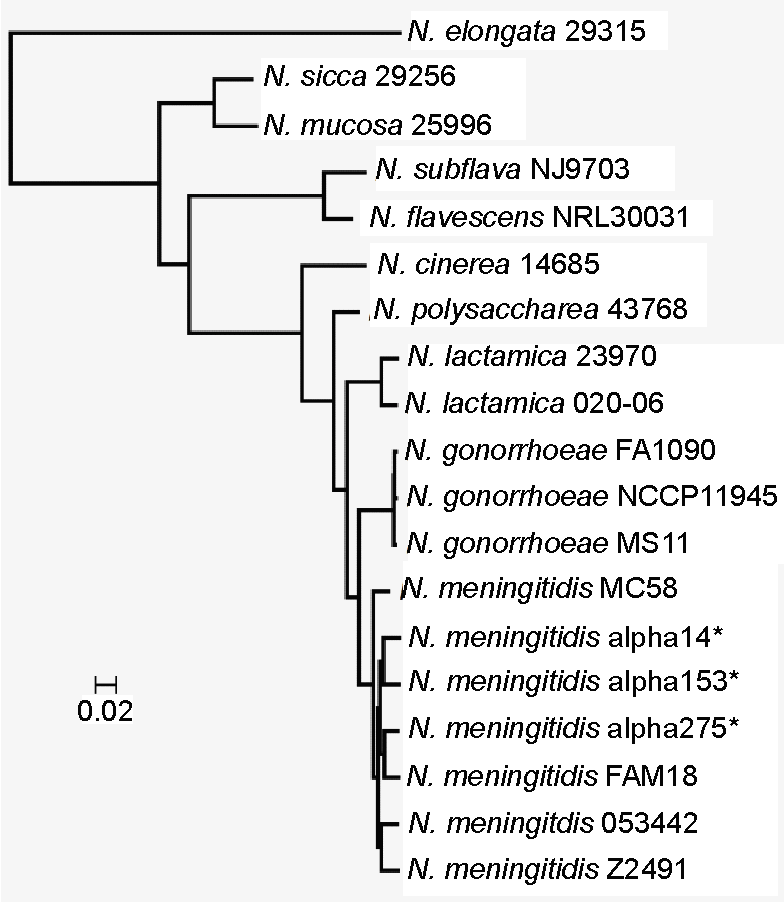|
Monobactams
Monobactams are monocyclic and bacterially-produced β-lactam antibiotics. The β-lactam ring is not fused to another ring, in contrast to most other β-lactams. Monobactams are effective only against aerobic Gram-negative bacteria (e.g., ''Neisseria'', ''Pseudomonas''). Siderophore-conjugated monobactams show promise for the treatment of multi drug-resistant pathogens. Aztreonam is a commercially available monobactam antibiotic. Other examples of monobactams are tigemonam, nocardicin A, and tabtoxin. Adverse effects to monobactams can include skin rash and occasional abnormal liver functions. Monobactam antibiotics exhibit no IgE cross-reactivity reactions with penicillin but have shown some cross reactivity with cephalosporins, most notably ceftazidime Ceftazidime, sold under the brand name Fortaz among others, is a third-generation cephalosporin antibiotic useful for the treatment of a number of bacterial infections. Specifically it is used for joint infections, meni ... [...More Info...] [...Related Items...] OR: [Wikipedia] [Google] [Baidu] |
β-lactam Antibiotic
β-lactam antibiotics (beta-lactam antibiotics) are antibiotics that contain a beta-lactam ring in their chemical structure. This includes penicillin derivatives (penams), cephalosporins and cephamycins (cephems), monobactams, carbapenems and carbacephems. Most β-lactam antibiotics work by inhibiting cell wall biosynthesis in the bacterial organism and are the most widely used group of antibiotics. Until 2003, when measured by sales, more than half of all commercially available antibiotics in use were β-lactam compounds. The first β-lactam antibiotic discovered, penicillin, was isolated from a rare variant of ''Penicillium notatum'' (since renamed ''Penicillium chrysogenum)''. Bacteria often develop resistance to β-lactam antibiotics by synthesizing a β-lactamase, an enzyme that attacks the β-lactam ring. To overcome this resistance, β-lactam antibiotics can be given with β-lactamase inhibitors such as clavulanic acid. Medical use β-lactam antibiotics are indicated for ... [...More Info...] [...Related Items...] OR: [Wikipedia] [Google] [Baidu] |
Aztreonam
Aztreonam, sold under the brand name Azactam among others, is an antibiotic used primarily to treat infections caused by gram-negative bacteria such as ''Pseudomonas aeruginosa''. This may include bone infections, endometritis, intra abdominal infections, pneumonia, urinary tract infections, and sepsis. It is given by intravenous or intramuscular injection or by inhalation. Common side effects when given by injection include pain at the site of injection, vomiting, and rash. Common side effects when inhaled include wheezing, cough, and vomiting. Serious side effects include ''Clostridium difficile'' infection and allergic reactions including anaphylaxis. Those who are allergic to other β-lactam have a low rate of allergy to aztreonam. Use in pregnancy appears to be safe. It is in the monobactam family of medications. Aztreonam inhibits cell wall synthesis by blocking peptidoglycan crosslinking to cause bacterial death. Aztreonam was approved for medical use in the United ... [...More Info...] [...Related Items...] OR: [Wikipedia] [Google] [Baidu] |
Tigemonam
Tigemonam is a monobactam antibiotic An antibiotic is a type of antimicrobial substance active against bacteria. It is the most important type of antibacterial agent for fighting bacterial infections, and antibiotic medications are widely used in the treatment and prevention of .... References Monobactam antibiotics Thiazoles Sulfonic acids {{antibiotic-stub ... [...More Info...] [...Related Items...] OR: [Wikipedia] [Google] [Baidu] |
Cephalosporin
The cephalosporins (sg. ) are a class of β-lactam antibiotics originally derived from the fungus ''Acremonium'', which was previously known as ''Cephalosporium''. Together with cephamycins, they constitute a subgroup of β-lactam antibiotics called cephems. Cephalosporins were discovered in 1945, and first sold in 1964. Discovery The aerobic mold which yielded cephalosporin C was found in the sea near a sewage outfall in Su Siccu, by Cagliari harbour in Sardinia, by the Italian pharmacologist Giuseppe Brotzu in July 1945. Structure Cephalosporin contains a 6-membered dihydrothiazine ring. Substitutions at position 3 generally affect pharmacology; substitutions at position 7 affect antibacterial activity, but these cases are not always true. Medical uses Cephalosporins can be indicated for the prophylaxis and treatment of infections caused by bacteria susceptible to this particular form of antibiotic. First-generation cephalosporins are active predominantly against Gram ... [...More Info...] [...Related Items...] OR: [Wikipedia] [Google] [Baidu] |
Penicillin
Penicillins (P, PCN or PEN) are a group of β-lactam antibiotics originally obtained from ''Penicillium'' moulds, principally '' P. chrysogenum'' and '' P. rubens''. Most penicillins in clinical use are synthesised by P. chrysogenum using deep tank fermentation and then purified. A number of natural penicillins have been discovered, but only two purified compounds are in clinical use: penicillin G (intramuscular or intravenous use) and penicillin V (given by mouth). Penicillins were among the first medications to be effective against many bacterial infections caused by staphylococci and streptococci. They are still widely used today for different bacterial infections, though many types of bacteria have developed resistance following extensive use. 10% of the population claims penicillin allergies but because the frequency of positive skin test results decreases by 10% with each year of avoidance, 90% of these patients can tolerate penicillin. Additionally, those with ... [...More Info...] [...Related Items...] OR: [Wikipedia] [Google] [Baidu] |
Cross-reactivity
Cross-reactivity, in a general sense, is the reactivity of an observed agent which initiates reactions outside the main reaction expected. This has implications for any kind of test or assay, including diagnostic tests in medicine, and can be a cause of false positives. In immunology, the definition of cross-reactivity refers specifically to the reaction of the immune system to antigens. There can be cross-reactivity between the immune system and the antigens of two different pathogens, or between one pathogen and proteins on non-pathogens, which in some cases can be the cause of allergies. In medical testing In medical tests, including rapid diagnostic tests, cross-reactivity can be either confounding or helpful, depending on the instance. An example of confounding that yields a false positive error is in a latex fixation test when agglutination occurs with another antigen rather than the antigen of interest. An example of helpful cross-reactivity is in heterophile antibo ... [...More Info...] [...Related Items...] OR: [Wikipedia] [Google] [Baidu] |
Tabtoxin
Tabtoxin, also known as wildfire toxin, is a simple monobactam phytotoxin produced by ''Pseudomonas syringae''. It is the precursor to the antibiotic tabtoxinine β-lactam (TBL). It is produced by: * Pseudomonas syringae pv. tabaci, the causal agent of the wildfire of tobacco. * P. syringae pv. coronafaciens * P. syringae pv. garcae * P. syringae BR2, causes a disease of bean (Phaseolus vulgaris) similar to tobacco wildfire. This organism is closely related to P. syringae pv. tabaci but cannot be classified in the pathovar tabaci because it is not pathogenic on tobacco. Tabtoxin is a dipeptide precursor to the biologically active form of TBL, differing by having an extra threonine attached by a peptide bond to the C terminus. Tabtoxin is required by BR2(R) for both chlorosis and lesion formation on bean. All mutations that affected tabtoxin production, whether spontaneous deletion or transposon induced, also affected lesion formation, and in all cases, restoration of tabtoxin produ ... [...More Info...] [...Related Items...] OR: [Wikipedia] [Google] [Baidu] |
Nocardicin A
Nocardicin A is a monocyclic β-lactam antibiotic included in the monobactam subclass. It is obtained from the fermentation broth of a strain of actinomycetes '' Nocardia uniformis'' subsp. ''tsuyamenensis'' as a metabolic product catalyzed by the enzyme nocardicin-A epimerase. It is stereochemically and biologically related to penicillin and cephalosporins The cephalosporins (sg. ) are a class of β-lactam antibiotics originally derived from the fungus ''Acremonium'', which was previously known as ''Cephalosporium''. Together with cephamycins, they constitute a subgroup of β-lactam antibiotics .... Monobactam antibiotics Amino acid derivatives {{antibiotic-stub ... [...More Info...] [...Related Items...] OR: [Wikipedia] [Google] [Baidu] |
Pseudomonas
''Pseudomonas'' is a genus of Gram-negative, Gammaproteobacteria, belonging to the family Pseudomonadaceae and containing 191 described species. The members of the genus demonstrate a great deal of metabolic diversity and consequently are able to colonize a wide range of niches. Their ease of culture ''in vitro'' and availability of an increasing number of ''Pseudomonas'' strain genome sequences has made the genus an excellent focus for scientific research; the best studied species include ''P. aeruginosa'' in its role as an opportunistic human pathogen, the plant pathogen '' P. syringae'', the soil bacterium '' P. putida'', and the plant growth-promoting ''P. fluorescens, P. lini, P. migulae'', and ''P. graminis''. Because of their widespread occurrence in water and plant seeds such as dicots, the pseudomonads were observed early in the history of microbiology. The generic name ''Pseudomonas'' created for these organisms was defined in rather vague terms by Walter Migula i ... [...More Info...] [...Related Items...] OR: [Wikipedia] [Google] [Baidu] |
Siderophore
Siderophores (Greek: "iron carrier") are small, high-affinity iron-chelating compounds that are secreted by microorganisms such as bacteria and fungi. They help the organism accumulate iron. Although a widening range of siderophore functions is now being appreciated. Siderophores are among the strongest (highest affinity) Fe3+ binding agents known. Phytosiderophores are siderophores produced by plants. Scarcity of soluble iron Despite being one of the most abundant elements in the Earth's crust, iron is not readily bioavailable. In most aerobic environments, such as the soil or sea, iron exists in the ferric (Fe3+) state, which tends to form insoluble rust-like solids. To be effective, nutrients must not only be available, they must be soluble. Microbes release siderophores to scavenge iron from these mineral phases by formation of soluble Fe3+ complexes that can be taken up by active transport mechanisms. Many siderophores are nonribosomal peptides, although several are biosynthes ... [...More Info...] [...Related Items...] OR: [Wikipedia] [Google] [Baidu] |
Beta-lactam
A beta-lactam (β-lactam) ring is a four-membered lactam. A ''lactam'' is a cyclic amide, and ''beta''-lactams are named so because the nitrogen atom is attached to the β-carbon atom relative to the carbonyl. The simplest β-lactam possible is 2-azetidinone. β-lactams are significant structural units of medicines as manifested in many β-lactam antibiotics Up to 1970, most β-lactam research was concerned with the penicillin and cephalosporin groups, but since then, a wide variety of structures have been described. Clinical significance The β-lactam ring is part of the core structure of several antibiotic families, the principal ones being the penicillins, cephalosporins, carbapenems, and monobactams, which are, therefore, also called β-lactam antibiotics. Nearly all of these antibiotics work by inhibiting bacterial cell wall biosynthesis. This has a lethal effect on bacteria, although any given bacteria population will typically contain a subgroup that is resistant ... [...More Info...] [...Related Items...] OR: [Wikipedia] [Google] [Baidu] |
Neisseria
''Neisseria'' is a large genus of bacteria that colonize the mucosal surfaces of many animals. Of the 11 species that colonize humans, only two are pathogens, '' N. meningitidis'' and ''N. gonorrhoeae''. ''Neisseria'' species are Gram-negative bacteria included among the Pseudomonadota, a large group of Gram-negative forms. ''Neisseria'' diplococci resemble coffee beans when viewed microscopically. Pathogenesis and classification Pathogens Species of this genus (family Neisseriaceae) of parasitic bacteria grow in pairs and occasionally tetrads, and thrive best at 98.6 °F (37 °C) in the animal body or serum media. The genus includes: * ''N. gonorrhoeae'' (also called the gonococcus) causes gonorrhea. * '' N. meningitidis'' (also called the meningococcus) is one of the most common causes of bacterial meningitis and the causative agent of meningococcal septicaemia. These two species have the ability of 'breaching' the barrier. Local cytokines of the area become secr ... [...More Info...] [...Related Items...] OR: [Wikipedia] [Google] [Baidu] |



